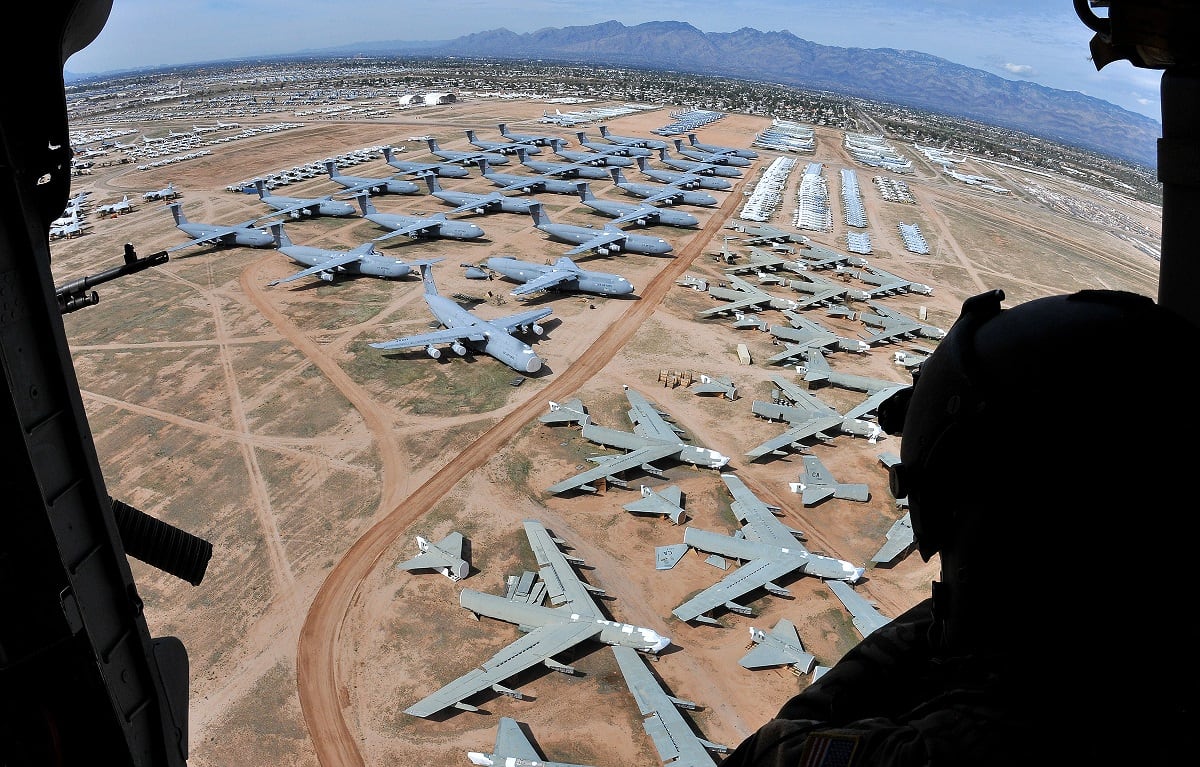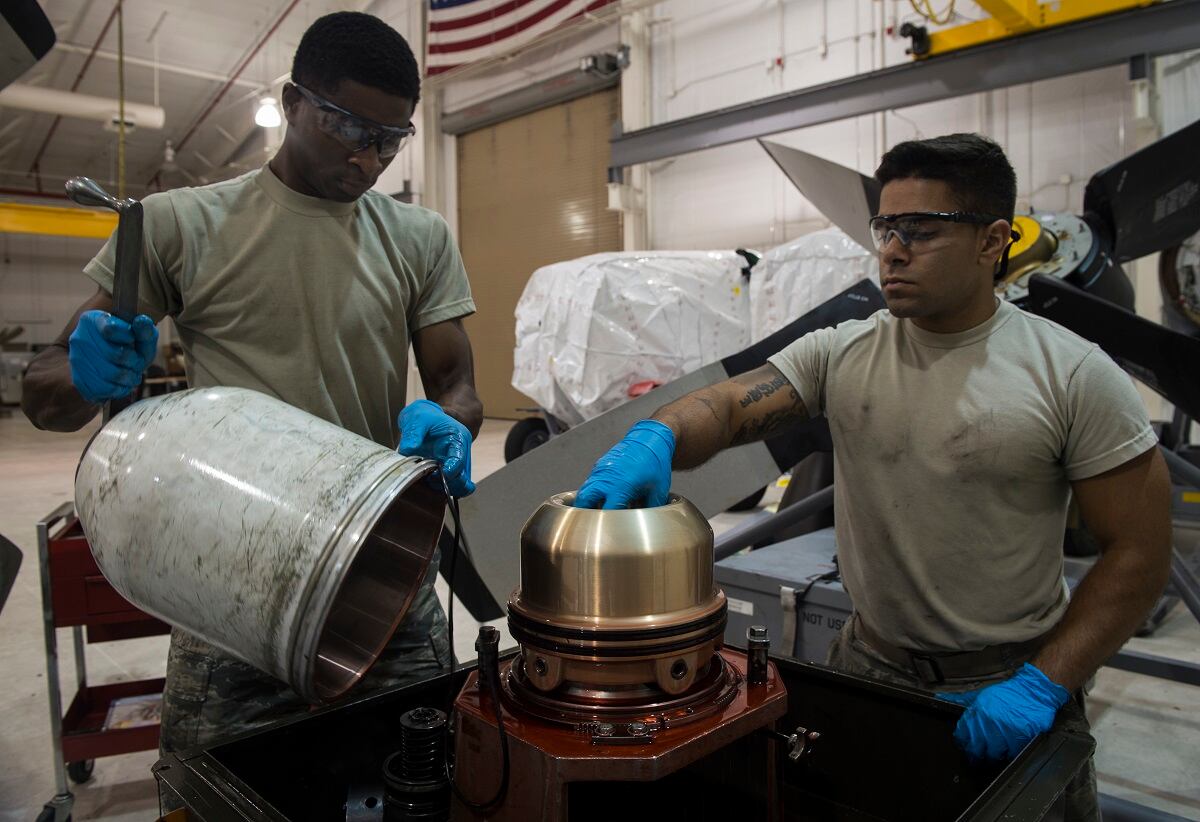The 1st Special Operations Wing on Monday took its latest crack at cutting back on unnecessary computer-based training and other requirements.
In an email and memo posted on the Facebook group Air Force amn/nco/snco, 1st SOW Commander Col. Tom Palenske outlined steps the Hurlburt Field, Florida-based wing is now taking to “reduce unnecessary and redundant pre-deployment requirements and focus on mission readiness.”
To do this, the 1st SOW is giving group and squadron commanders a lot more leeway to figure out the best way to train their airmen.
This means they’ll be able to scrap hated computer-based training whenever possible, and instead train airmen using “mass briefings and group dialogue,” the memo said.
Palenske told his commanders he’d have their backs if they go beyond what is spelled out in AFIs, or Air Force instructions, and get some flak.
“I recognize there is some hesitation to implement change conflicting with published AFI guidance,” Palenske wrote. “However, the 1 SOW is not going to wait to implement necessary change until AFIs, publications and other documents are updated if the policies are outdated. In the interim, I will accept, at my level, all risk and responsibility assumed with this change.”
The 1st SOW confirmed the memo was sent by Palenske.

“This is another example of Col. Palenske’s commitment to the clear guidance from Air Force and Air Force Special Operations Command leaders ― reduce unnecessary and redundant pre-deployment requirements and focus on mission readiness,” the public affairs office for the 1st SOW said in an email. “The purpose of this guidance is to provide squadron commanders a more efficient, flexible and effective ground-training option for our airmen that is tailored to their individual experiences and occupational requirements, while, at the same time, providing more time for airmen to focus on their primary mission duties.”
The Air Force in recent years has taken aim at redundant, unnecessary or time-wasting training or paperwork requirements, commonly known in the ranks as “queep.” Air Force leaders hope that cutting back on those requirements will improve morale by giving airmen more time to do their real jobs, or spend more time with their friends and families in the evenings or on weekends.
Last month, U.S. Air Forces Central Command announced a vast streamlining of its pre-deployment requirements as part of an effort to give airmen more time with their families before going overseas.
The 1st SOW said Palenske’s recent moves were made independently of AFCENT’s streamlining effort. The wing also highlighted a September 2017 memo from Palenske that eliminated 14 computer-based and other training events, cut the pre-deployment checklist from 12 pages to three, and streamlined four mandatory briefings.
This week’s moves are simply the latest in his effort to reduce the burden on his airmen, according to public affairs.
RELATED

In the email posted online, Palenske said the wing has heard a lot of feedback on how useful CBTs are ― or aren’t. The wing put together a team of subject-matter experts, lawyers and airmen of all stripes to find a way to cut down on requirements, while still providing the necessary training and remaining within the law.
“We often say that all of the really good ideas in the Air Force come from the young airmen and officers actually doing the work in the field,” Palenske said. “Our goal over the past two years has been to erode the barrier of trust between those hard working airmen and a leadership team that is empowered to turn their ideas into reality. This is just one more example of us making that journey together.”
The memo said commanders will be responsible for setting up the content of briefings that replace computer-based training, scheduling them, and updating the Advanced Distributed Learning Service database to reflect that airmen have learned the required material.
Airmen who can’t make it to the classroom or mass briefing training will still have to learn the material on the computer.
First-term airmen will still have to take their initial training for all mandatory courses using CBT, but can opt for mass briefings for follow-up training.
The memo said annual mandatory training on cyber awareness, force protection, combating human trafficking and the Green Dot sexual assault and suicide prevention program, which was previously done via CBT, can now be done through mass briefings.
Biennial training on the No Fear Act, triennial training on religious freedom and Defense Travel System policy, equal opportunity human relations orientation training given to newcomers to the base, and one-time equal opportunity training for airmen at their first duty station and basic DTS training can also be done through a mass briefing, the memo said.
Faster skill advancement
In early April, Palenske issued another memo seeking to speed up the process for upgrading the skill levels of airmen such as maintainers.
Right now, Air Force rules require airmen to be trained for 12 months to be upgraded to a 5-level journeyman or a 7-level craftsman, even if they finish all their training requirements in less than a year.
In an April 10 memo, also posted on the amn/nco/snco page, Palenske gave squadron commanders the ability to waive that 12-month requirement after airmen have finished all the other mandatory training requirements.
Palenske said that requirement “hinders the unit’s ability to use trained professionals in crucial positions, and cripples our [airmen’s] continuing education and the growth of our force.” Instead, he said, if a squadron commander decides a particular airman can safely get the job done earlier, the wing should allow that airman to take on the increased responsibilities.

As with the CBT memo, Palenske pledged to take the blame if anything went wrong.
The Air Force in recent years mounted a major effort to wipe out a massive 4,000-maintainer shortfall that was hindering aircraft readiness and stretching flightlines to the breaking point. That shortfall has now been all but eliminated, but many of the new maintainers are less-experienced 3-levels.
The Air Force is looking for new and innovative ways to speed up the training process, so 3-level maintainers can get the necessary experience and take on the more advanced work done by 5- and 7-level maintainers.
In an April 11 email, Tech. Sgt. Katherine Holt, a spokeswoman for the 1st SOW, said that Palenske used maintainers as an example of a job that could receive the time-in-training waivers. But, Holt said, the policy would apply to all airmen in all 25 squadrons in the 1st SOW.
“Upgrading the airmen who complete all training requirements early gives their units a fully qualified technician on time versus four, five or six months down the road,” Holt said. “Units are enhanced when we empower fully-trained and qualified airmen to do what they’ve been trained to do and accomplish the 1st SOW mission.”
Stephen Losey is the air warfare reporter for Defense News. He previously covered leadership and personnel issues at Air Force Times, and the Pentagon, special operations and air warfare at Military.com. He has traveled to the Middle East to cover U.S. Air Force operations.




